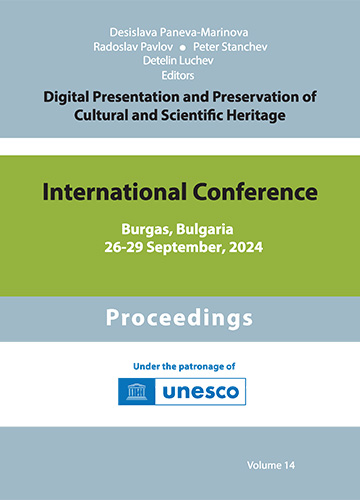Renovating the Cultural Heritage of Traditional Shadow Theatre with eShadow
Design, Implementation, Evaluation and Use in Formal and Informal Learning
DOI:
https://doi.org/10.55630/dipp.2018.8.2Keywords:
digital storytelling, shadow theatre, cross-curricular learning, digital marionettesAbstract
Digital storytelling is an engaging learning environment that gained worldwide popularity over the last years. It offers a rich cross-curricular learning environment within which children design, create and present their own stories and develop many skills including literacy, presentation and communication skills as well as inquiry-based learning and digital skills. In this paper we present a new way of digital storytelling, a form of dramatized storytelling inspired by the rich tradition of Shadow Theater. This form of storytelling showcases an engaging way of renovating cultural heritage with the use of digital technologies. It combines a number of digital tools for the production of the digital stories covering all five phases of film making: scenario development, pre-production, production, post-production and distribution. eShadow can be used (a) to create digital shadow puppets, and (b) to set up, perform and record the scenes of the digital story (production phase). This way, digital story creation is wrapped around engaging learning scenarios, playful improvisations and creative learning. eShadow has been extensively used to support cross-curricular learning mainly in Greek schools. It is extended to support marionette-like interactions to promote its use in countries with relevant storytelling cultures.References
Agarwal, A., & Meyer, A. (2009). Beyond usability: evaluating emotional response as an integral part of the user experience. In proceedings of the CHI EA ’09 conference, 2009.
Brooke, J. (1996). SUS-A quick and dirty usability scale. Usability evaluation in industry 189 (194), pp. 4-7.
Chin, J., Diehl, V., Norman, K. (1988). Development of an instrument measuring user satisfaction of the human–computer interface. In proceedings of the CHI ‘88 conference: Human Factors in Computing Systems, 1988.
Christoulakis, M., Pitsiladis, A., Stergiopoulos, P., Moumoutzis, N., Maragkoudakis, G., & Christodoulakis, S. (2014). Creative collaborative experiences with interactive shadow theater. Formazione & Insegnamento XII – 2 – 2014, ISSN 1973-4778 print – 2279-7505 on line doi: 107346/-fei-XII-02-14_17 Available online at: http://ojs.pensamultimedia.it/index.php/siref/article/viewFile/876/848
Hatzigianni, M., Miller, M, & Quiñones, G. (2016). Karagiozis in Australia: Exploring principles of social justice in the arts for young children. In International Journal of Education & the Arts, 17(25), 2016.
Leap Motion (n.d.). In Wikipedia. https://en.wikipedia.org/wiki/Leap_Motion
Lu, F., Tian, F., Jiang, Y., Cao, X., Luo, W., Li, G., Zhang, X., Dai, G. and Wang, H. (2011). ShadowStory: creative and collaborative digital storytelling inspired by cultural heritage. In Proceedings of the SIGCHI Conference on Human Factors in Computing Systems (pp. 1919- 1928). ACM.
Lunce, C. (2011). Digital storytelling as an educational tool. Indiana Libraries, 30(1), 77-80.
Moraiti A., Moumoutzis N., Christoulakis M., Pitsiladis A., Stylianakis G., Sifakis Y., Maragoudakis I., Christodoulakis S. (2016). Playful creation of digital stories with eShadow. 11th International Workshop on Semantic and Social Media Adaptation and Personalization (SMAP), Thessaloniki, 2016, pp. 139-144.
Moumoutzis, N., Christoulakis, M., Pitsiladis, A., Maragoudakis, I., Christodoulakis, S., Menioudakis, M., Koutsabesi, J., Tzoganidis, M. (2017). Using new media arts to enable projectbased learning in technological education. Global Engineering Education Conference (EDUCON) 2017 IEEE, pp. 287-296, ISSN 2165-9567.
Vutborg, R., Kjeldskov, J., Pedell, S., & Vetere, F. (2010). Family storytelling for grandparents and grandchildren living apart. In Proceedings of the 6th Nordic conference on human-computer interaction: Extending boundaries (pp. 531-540). ACM.




